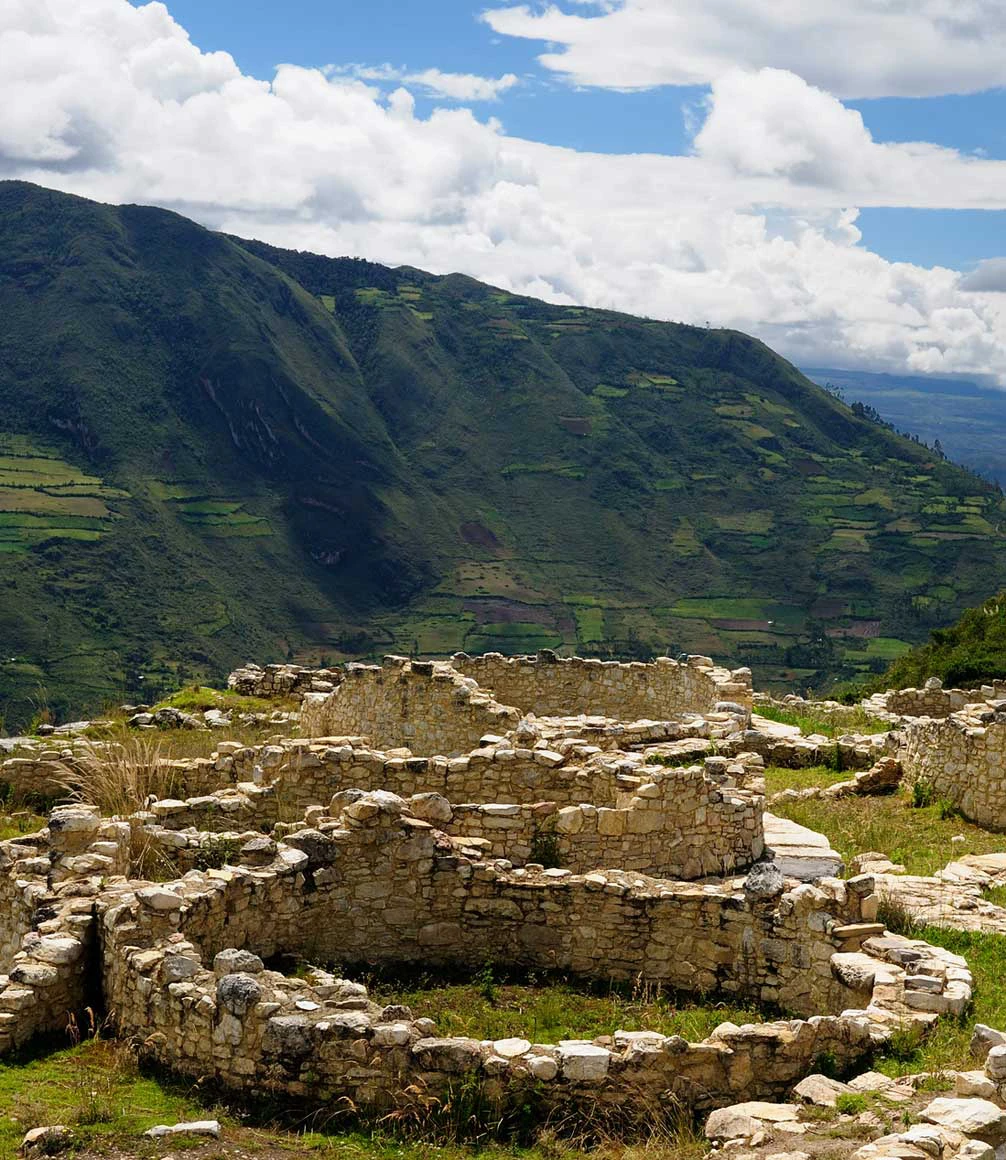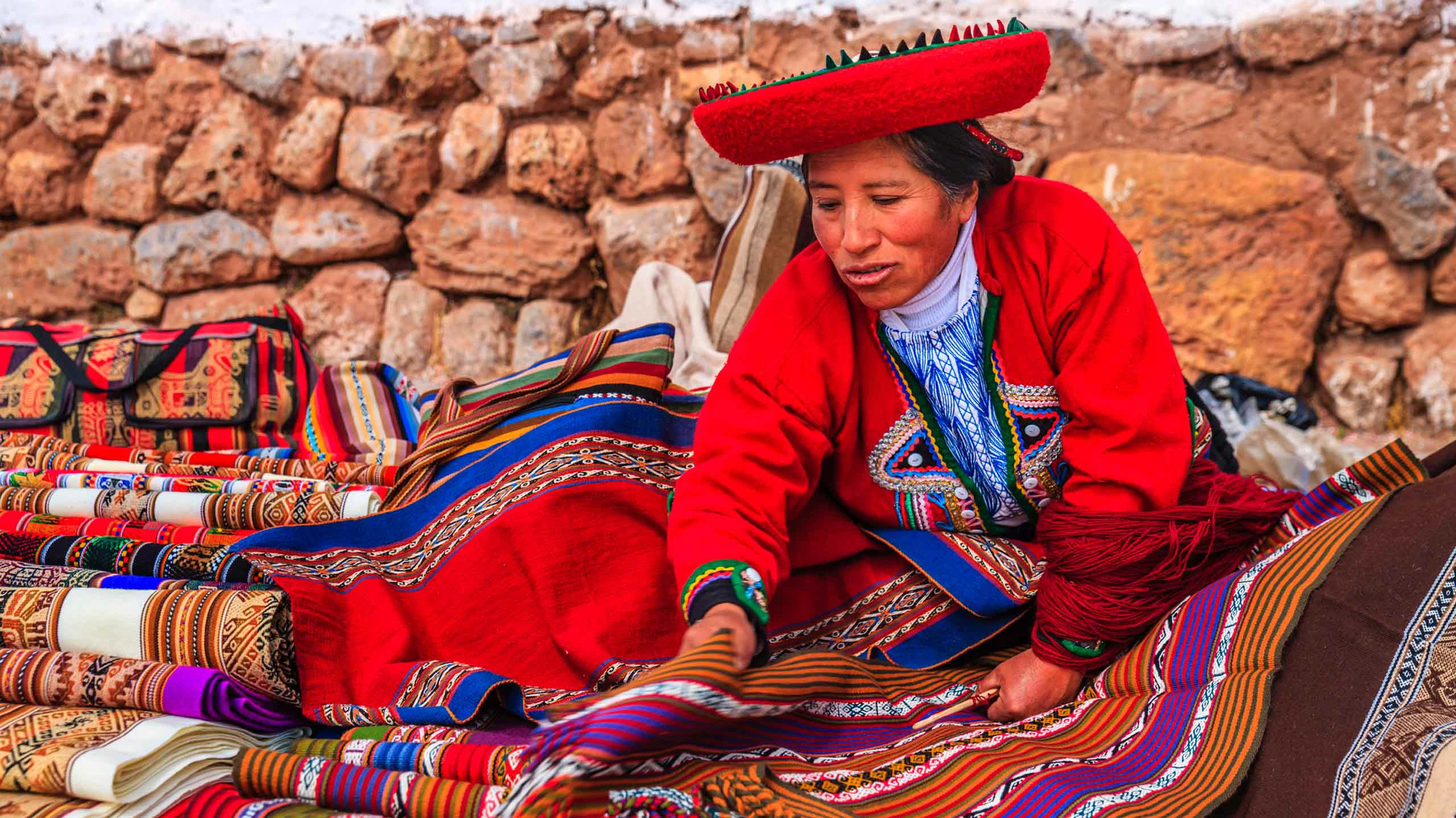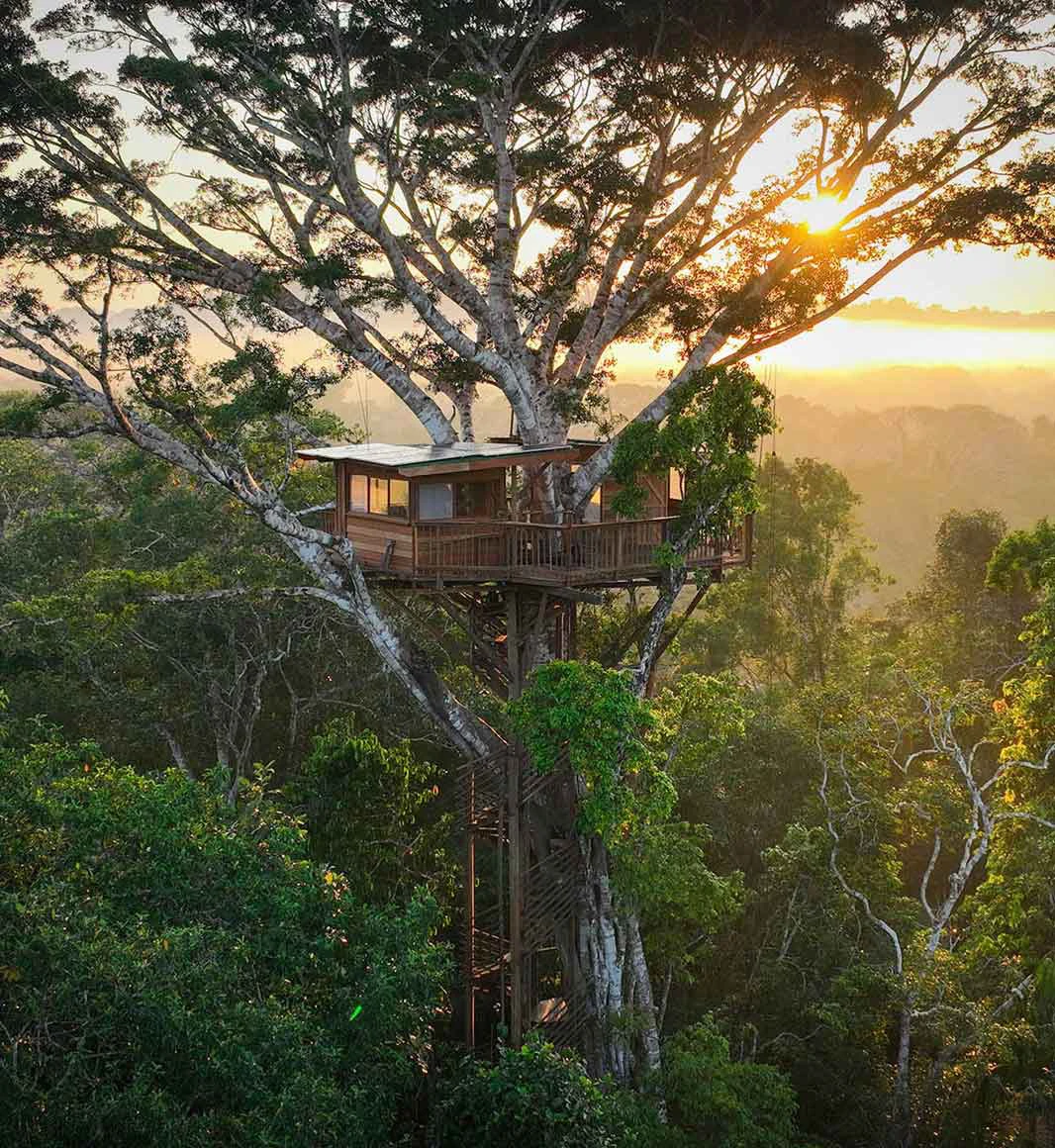Exploring the Kingdom of the Cloud Warriors
by Mark Beken

The sarcophagi of El Tigre in Chachapoyas

Cloud forest
I have hazy memories of trekking up to the ancient walled citadel of Kuelap, of switch-backing along mountain roads through mist-wreathed cloud forests and along freakishly vertiginous river canyons before disappearing across the border.
Back then I was pretty much the only gringo in town. I had no idea that travel would be my career. And even though I had barely scratched the surface, there was a Byronic grandeur to the landscapes, and enigmatic whispers from its ancient pre-Inca past, that stayed with me, a nagging itch that I recently had the good fortune to scratch while on an exploratory research trip to northern Peru. I wanted to see how Chachapoyas had changed since I was first there, to truffle out new experiences and accommodations for Explorations Company guests, to explore how local NGOs were addressing social and environmental issues, and ultimately assess whether this little-known corner of South America was equipped to host the most demanding of guests.
Although the intervening years have seen a slow increase in outside interest and a cable car has even been built to whoosh travellers up to Kuelap, today still just a trickle of travellers make it to Chachapoyas. What I discovered so far exceeded my expectations that, if you choose to read on, I feel the conflicting urges both to bind you to secrecy and to shout out, ‘To heck with Machu Picchu and the gringo trail! Come to Chachapoyas instead!’
Highlights of exploring Chachapoyas
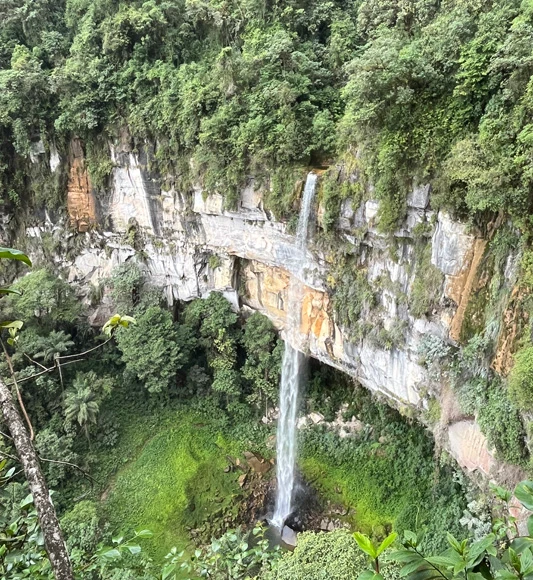
One of the lower sections of the Yumbilla Falls.
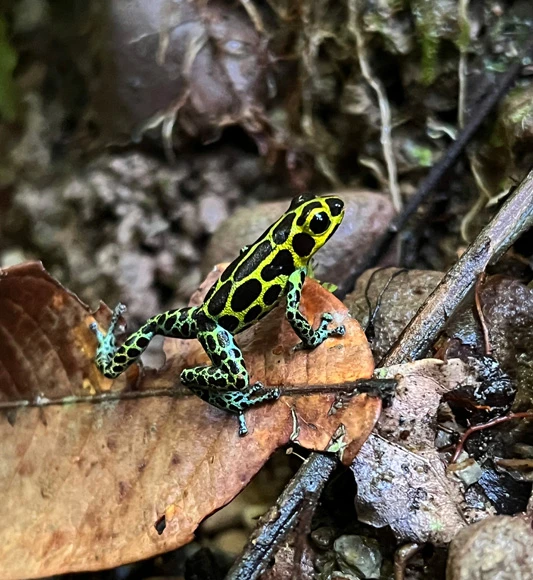
One of the many colourful frogs that you might find.

Human remains at El Tigre.
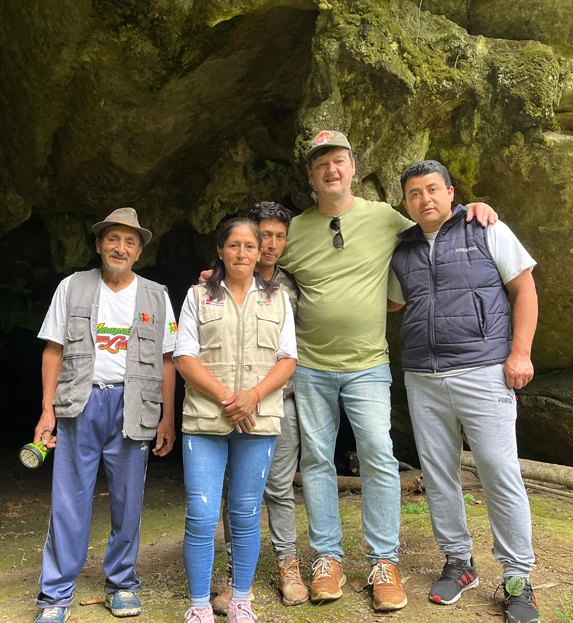
Meeting senior members of the community of Corosha.
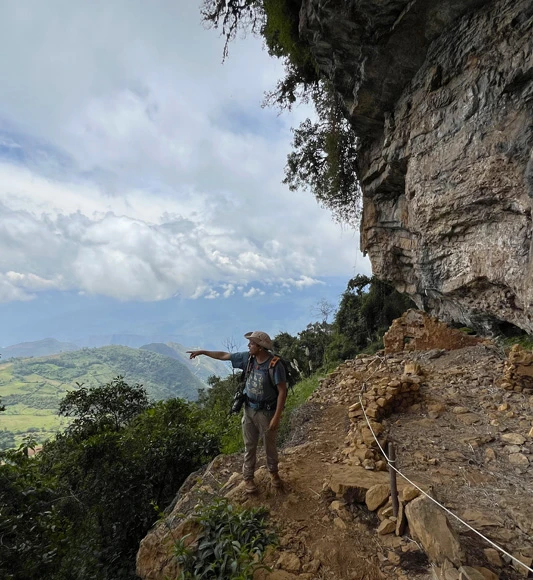
My guide showing the way back to San Geronimo.
"If you’ve ever felt the stirrings of an Indiana Jones within you, this is the place to live out those fantasies."
Why travel to Chachapoyas?
Maybe a few scene-setters are in order. Let’s start with waterfalls. Not one, not two, but three of the world’s twenty-highest waterfalls are here. The highest, Yumbilla, tumbles in a series of cascades that together are more than twice the height of the Empire State Building, and only a touch shorter than the Angel Falls. I trekked there through lush primeval cloud forest past other giant waterfalls, cock-of-the-rock leks and quetzals, and had the place to myself.
Then we might look at its biodiversity. In a country that’s already considered mega-diverse, the department of Amazonas, of which Chachapoyas is the spiritual heart, is the epicentre of that diversity. Here, an area smaller than Switzerland contains one in eight of all the planet’s bird species–just think about that for a moment–including rare endemic wonders such as the improbably named, and even more improbably beautiful, marvellous spatuletail hummingbird. There are numberless species of extravagantly coloured frogs and orchids. And precious few mosquitoes! A highland community I visited has taken an inspiring lead in conserving its forests, and in particular, the critically endangered yellow-tailed woolly monkey and spectacled bear that live there. Watch this space for some exciting future developments we’re working on together.
Then, there is the archaeology. It is said that 90% of Peru’s archaeological sites are yet to be discovered. I’d wager a significant percentage of these will be found in Chachapoyas. You’ll find spectacular ancient mountaintop cities, 5,000-year-old temples dedicated to cacao, and mortuary sites clinging to remote and inaccessible cliffs. New finds are being made every year. I trekked to the site of El Tigre, officially discovered only in 2013, inching my way along a narrow ledge hundreds of feet up past at least a dozen human skulls and ancient textile fragments to find myself staring back at a row of 13 grimly inscrutable anthropomorphic sarcophagi. If you’ve ever felt the stirrings of an Indiana Jones within you, this is the place to live out those fantasies. If you wish, we can even have the area’s leading anthropologist Peter Lerche accompany you to give you insights born of a lifetime’s study.
The Inca Empire struggled for centuries to subdue the Chachapoyas, whose reputation for fierceness and bravery was unmatched. They ultimately succeeded, but cultural traditions often die harder, and today you can find master artists and craftspeople still producing beautiful ceramics and textiles with millennia-old design motifs. And there’s a recent wave of (mostly) Limeño settlers–chefs, healing practitioners and yoga instructors drawn by the permanent springlike weather–many of whom offer excellent private classes on how to make best use of the superabundant plants and natural energy of the place. We hope you’ll agree there’s more than enough in Chachapoyas to keep you fascinated for quite a few days. And it’s easy to combine with the northern Peruvian Amazon, which unlike its southern counterpart, is, thanks to its black water rivers, largely free of malaria, dengue and Zika.

Living room at Gocta Natura Lodge.

Time to relax at Gocta Natura Lodge.
Where to stay in Chachapoyas
These days, even getting to Chachapoyas is a breeze compared to the arduous 12-hour road journey of yesteryear, with direct 90-minute flights most days from Lima. But where to stay? Things have also moved on in this regard, and today there are a number of small and charming, sustainably operated, owner-run lodges available to choose from. My favourite was Gocta Natura, run by the charming Rocio Florez, herself a Limeña, who came here nine years ago with a dream and more than a dash of style to create a very civilised patch of Eden overlooking Gocta Falls, the smallest but arguably most dramatic of Chachapoyas’ three giant waterfalls. It’s the kind of place where nothing is too much trouble. They’ll prepare an amazing picnic breakfast for you to enjoy at the base of the falls before anyone else arrives, or pisco sour sundowners and snacks by a private natural swimming hole. The food, usually served al fresco on the main house’s chic wraparound wooden terrace, is sensational, and you can happily chat away with fellow guests over a glass of new-wave Peruvian red wine (really rather good) until the wee small hours before wending your way back to your sleek and spacious eco-cabin in the forest.
For many–too many, perhaps–a visit to Peru is dominated by the desire to see Machu Picchu. But however breathtaking this iconic site is, however understandable the desire to visit, given that most people will only ever visit Peru once, it’s a well-polished trail. You’ll see the sights. But you’ll also see the crowds. And, to some extent at least, a version of Peru that the country’s tourism authorities want you to see.
We’re ready to call it. By all means follow the gringo trail to Machu Picchu. But, if even the slightest heart of an adventurer beats within you, if experiencing a bewitching combination of natural and man-made wonders without the crowds and in no little style is the kind of thing that gets your juices flowing, then do try to carve out a little time for Chachapoyas.
Looking to follow in Mark's footsteps?
